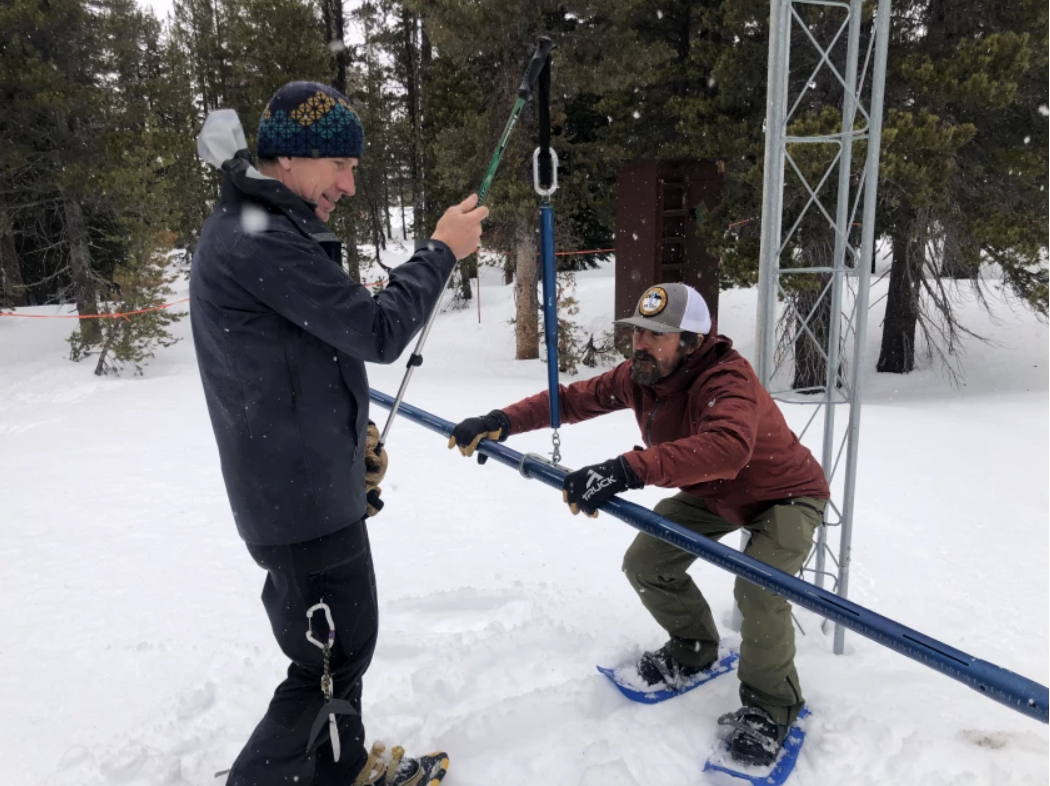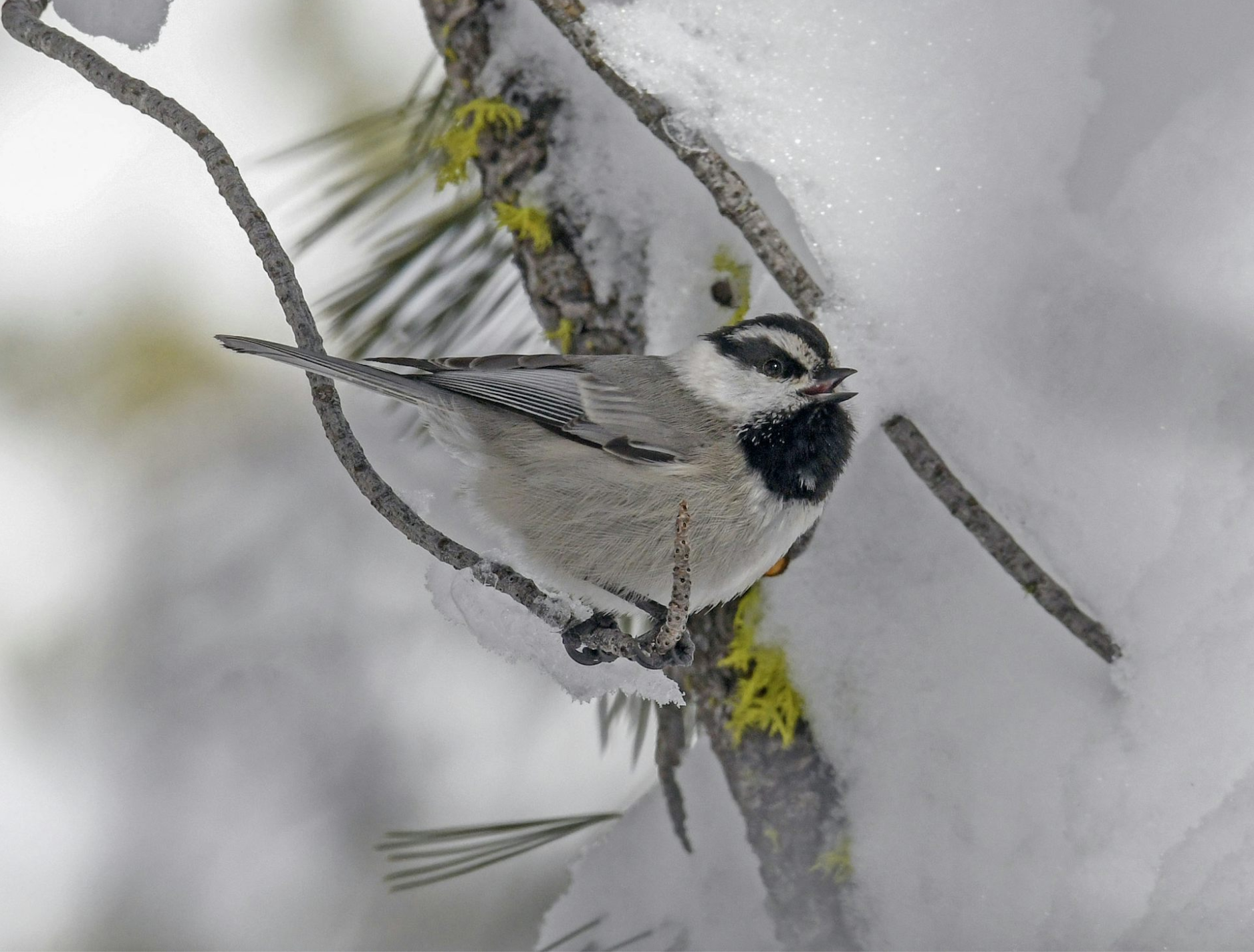Above: Jeff Anderson (left) helps Jason Welz (right) as he weighs the water content of snow. Ali Dickson| KUNR.
This story was shared with permission from KUNR Public Radio. For an audio version of the story, please visit the KUNR website.
Jason Welz, a hydrologist for the Natural Resource Conservation Service, crunched through snow as he measured snow at the Mt. Rose SNOTEL — a station that measures snowpack and weather conditions. After raising a long, hollow pole above his head, he pushed it deep into the snow until it reached the ground below.
The pole collected snow, which was then weighed. The SWE, or snow water equivalent, is the amount of water contained in the snowpack, and it is measured to predict how much water will be available this summer.
Snowfall and SWE measurements are taken monthly over the winter, but the one in early April is the most accurate predictor for water, said Jeff Anderson, hydrologist for NRCS.
The measurements revealed that the snowpack was just about normal with 106 inches of snow. That translated to 39 inches of water.
Chad Blanchard, federal water master for the Truckee and Carson rivers, said more water is always better, but what fell this winter will do.
“We always hope for more. We always want big years, a lot of runoff, where we can fill all the reservoirs and then get a whole bunch of water down to Pyramid Lake. But that didn’t happen, so we’ll have to be happy with what we got. You know, can’t complain too much about a median year and coming close to filling all the reservoirs,” Blanchard said.
If Lake Tahoe fills up completely, it can store enough drinking water in reservoirs to last three years, he said. And because the lake will likely almost fill up, it’ll probably be enough water for two years. Predicting reservoir levels means more than measuring the water available, though – it also means anticipating what will disappear.
“We lose 55% of the total reservoir portion of Lake Tahoe every year from evaporation,” Blanchard said.
“We lose about 40 inches of water – it just evaporates off the lake and goes up. So we need a lot of inflow just to offset that, let alone store more water to have excess,” he said.
This was the last snow measurement for the season, but the SNOTEL will continue to collect data all year.
Ali Dickson is the 2025 spring intern for KUNR and the Hitchcock Project for Visualizing Science. She is a student in the master’s program at the Reynolds School of Journalism.






